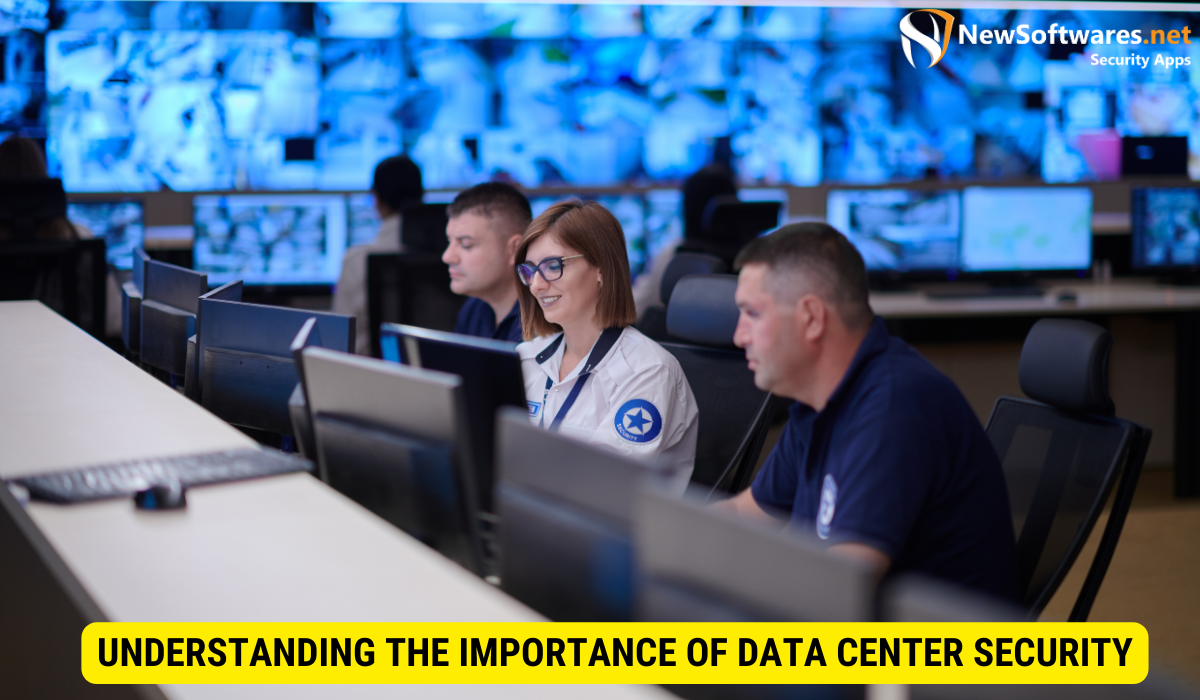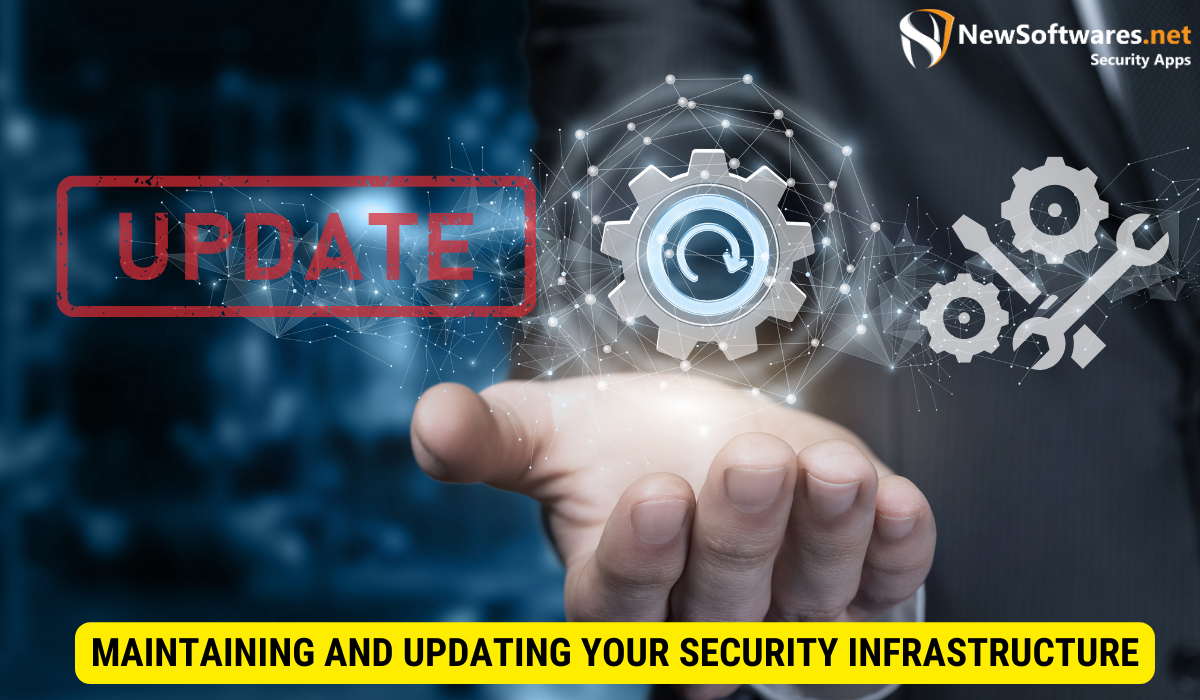To fortify your data center’s security infrastructure, start by understanding its importance, evaluating your current security, and identifying potential threats. Explore physical security enhancements such as biometric authentication and video surveillance, along with cybersecurity solutions like firewalls and encryption. Tailor security measures to your data center’s unique needs, ensure seamless integration, and regularly maintain and update your security infrastructure to stay ahead of emerging threats.
In this rapidly evolving digital landscape, data centers play a crucial role in storing and processing massive amounts of information. As businesses become increasingly dependent on these centers, the need for robust security measures cannot be overstated. I will explore the importance of data center security, potential threats to be aware of, how to evaluate your current security infrastructure, different methods of fortification, implementing the right security measures, and maintaining and updating your security infrastructure.
Understanding the Importance of Data Center Security

Data centers serve as the backbone of modern business operations. They house critical data and applications, making them a prime target for cybercriminals and malicious actors. Ensuring the security and integrity of your data center is of utmost importance in order to protect sensitive information, maintain business continuity, and safeguard customer trust. By investing in robust security measures, you can mitigate the risk of data breaches and other security incidents.
The Role of Data Centers in Modern Business
Data centers are no longer just warehouses for servers; they have evolved into strategic assets that empower businesses to operate efficiently in the digital age. From hosting cloud-based applications to serving as the foundation for digital transformation initiatives, data centers enable organizations to store, process, and analyze vast amounts of data. As businesses rely more heavily on data centers, the need for effective security measures becomes paramount.
Moreover, data centers play a crucial role in supporting the growth of e-commerce. With the increasing popularity of online shopping, businesses need reliable and secure data centers to handle the influx of customer data, transaction records, and inventory management systems. A breach in data center security could not only result in financial losses but also damage a company’s reputation, leading to a loss of customer trust and loyalty.
Potential Threats to Data Center Security
As technology advances, so do the threats that data centers face. Cybercriminals are constantly developing new and sophisticated methods to breach security systems. Some common threats to data center security include:
- Malware and ransomware attacks: These types of attacks involve malicious software that can infiltrate a data center’s network, encrypting files and demanding a ransom for their release. Such attacks can cause significant disruption to business operations and result in financial losses.
- Distributed denial-of-service (DDoS) attacks: In a DDoS attack, cybercriminals overwhelm a data center’s network with a flood of traffic, rendering it inaccessible to legitimate users. This can lead to service disruptions, loss of revenue, and damage to a company’s reputation.
- Insider threats and unauthorized access: Data centers are not only vulnerable to external threats but also to internal ones. Employees with malicious intent or those who inadvertently compromise security protocols can pose a significant risk to data center security. Unauthorized access to sensitive data can result in data breaches and the exposure of confidential information.
- Physical theft or damage: While data centers have robust digital security measures in place, physical security is equally important. Theft or damage to data center infrastructure, such as servers or networking equipment, can lead to data loss, service interruptions, and financial repercussions.
Understanding these threats is crucial for developing effective security strategies. Data center operators must implement a multi-layered approach to security, combining physical security measures, such as access controls and surveillance systems, with advanced cybersecurity solutions, including firewalls, intrusion detection systems, and encryption protocols.
Additionally, regular security audits and vulnerability assessments should be conducted to identify and address any potential weaknesses in the data center’s security infrastructure. Employee training and awareness programs are also essential to ensure that all staff members understand their role in maintaining data center security and are equipped to recognize and respond to potential security threats.
By staying vigilant and proactive in safeguarding data center security, businesses can protect their critical assets, maintain operational continuity, and instill confidence in their customers.
Evaluating Your Current Security Infrastructure
Before fortifying your data center’s security, it is essential to assess your current infrastructure to identify potential weak points and assess the effectiveness of existing security measures.
Identifying Weak Points in Your Security
Conducting a comprehensive security audit will help identify vulnerabilities in your data center’s security system. This involves assessing physical access controls, network security protocols, and employee access privileges. By identifying weak points, you can develop targeted solutions to address these vulnerabilities.
Assessing the Effectiveness of Current Security Measures
Evaluating the effectiveness of your current security measures is key to understanding their strengths and weaknesses. This can include analyzing incident response protocols, monitoring tools, and security training programs. By assessing the effectiveness of these measures, you can make informed decisions about potential enhancements or replacements.
Exploring Different Methods of Fortification
After evaluating your current security infrastructure, it’s time to explore different methods to fortify your data center’s security. This involves considering physical security enhancements and cybersecurity solutions.
Physical Security Enhancements for Data Centers
Physical security measures are the first line of defense for any data center. This includes implementing access controls such as biometric authentication, video surveillance systems, and security personnel. Physical security enhancements deter unauthorized access and provide a visible deterrent to potential intruders.
Cybersecurity Solutions for Data Protection
Cybersecurity solutions are crucial for safeguarding data and preventing unauthorized access. This can include implementing firewalls, intrusion detection and prevention systems, encryption technologies, and robust access controls. It is important to choose solutions that align with your specific data center requirements and industry best practices.
Implementing the Right Security Measures
Now that you have explored different methods of fortification, it’s time to implement the right security measures for your data center.
Tailoring Security Measures to Your Data Center
Each data center has its unique security requirements. It’s essential to tailor security measures to meet your specific needs, considering factors such as the sensitivity of the data, compliance requirements, and the threat landscape. This may involve a combination of physical security enhancements, cybersecurity solutions, and employee training programs.
Ensuring Seamless Integration of Security Enhancements
When implementing new security measures, it is crucial to ensure a smooth integration with existing infrastructure. This involves comprehensive planning, testing, and coordination to minimize disruptions to ongoing operations. Regular communication with stakeholders and involving them in the process can help foster a culture of security.
Maintaining and Updating Your Security Infrastructure

Securing your data center is an ongoing process. Regular audits and updates are necessary to keep up with emerging threats and maintain the effectiveness of your security infrastructure.
Regular Audits and Security Checks
Performing regular audits and security checks is essential for identifying vulnerabilities, ensuring compliance with industry standards, and detecting any suspicious activity. This involves reviewing logs, conducting penetration testing, and staying abreast of the latest security best practices. Regular audits help you stay proactive in protecting your data center.
Staying Ahead of Emerging Security Threats
The threat landscape is constantly evolving. Staying informed about emerging security threats and industry trends is crucial for maintaining the security of your data center. This involves keeping up with the latest security news, participating in industry conferences, and engaging with cybersecurity experts. By staying ahead of potential threats, you can plan and implement effective security strategies.
Key Takeaways
- Data centers are vital assets for businesses, necessitating robust security measures to safeguard sensitive information, maintain business continuity, and protect customer trust.
- Potential threats to data center security include malware attacks, DDoS attacks, insider threats, and physical theft or damage.
- Before fortifying your data center’s security, evaluate your existing infrastructure to identify weak points and assess the effectiveness of current security measures.
- Methods of fortification include physical security enhancements and cybersecurity solutions tailored to your data center’s unique requirements.
- Maintain and update your security infrastructure through regular audits, security checks, and staying ahead of emerging security threats.
FAQs
Why is data center security important?
Data center security is important because it protects sensitive information, ensures business continuity, and maintains customer trust. Breaches in data center security can result in financial loss, reputational damage, and legal consequences.
What are some physical security enhancements for data centers?
Physical security enhancements for data centers include biometric authentication, video surveillance systems, security personnel, and access control systems. These measures help prevent unauthorized access and deter potential intruders.
What are some common cybersecurity solutions for data centers?
Common cybersecurity solutions for data centers include firewalls, intrusion detection and prevention systems, encryption technologies, and robust access controls. These solutions help safeguard data, prevent unauthorized access, and detect potential cyber threats.
How can I assess the effectiveness of my current security measures?
Assessing the effectiveness of your current security measures involves evaluating incident response protocols, monitoring tools, and security training programs. You can also conduct penetration testing and regularly review logs to identify any vulnerabilities or areas for improvement.
What is the importance of regular audits and security checks?
Regular audits and security checks are important for identifying vulnerabilities, ensuring compliance, and detecting any suspicious activity. By regularly reviewing and updating your security measures, you can stay proactive in protecting your data center against emerging threats.
Conclusion
Selecting the right methods to fortify your data center’s security infrastructure is essential in today’s digital landscape. By understanding the importance of data center security, evaluating your current security infrastructure, exploring different fortification methods, implementing the right security measures, and maintaining and updating your security infrastructure, you can effectively protect your data, maintain business continuity, and instill confidence in your customers. By prioritizing data center security, you are investing in the future success of your business.
